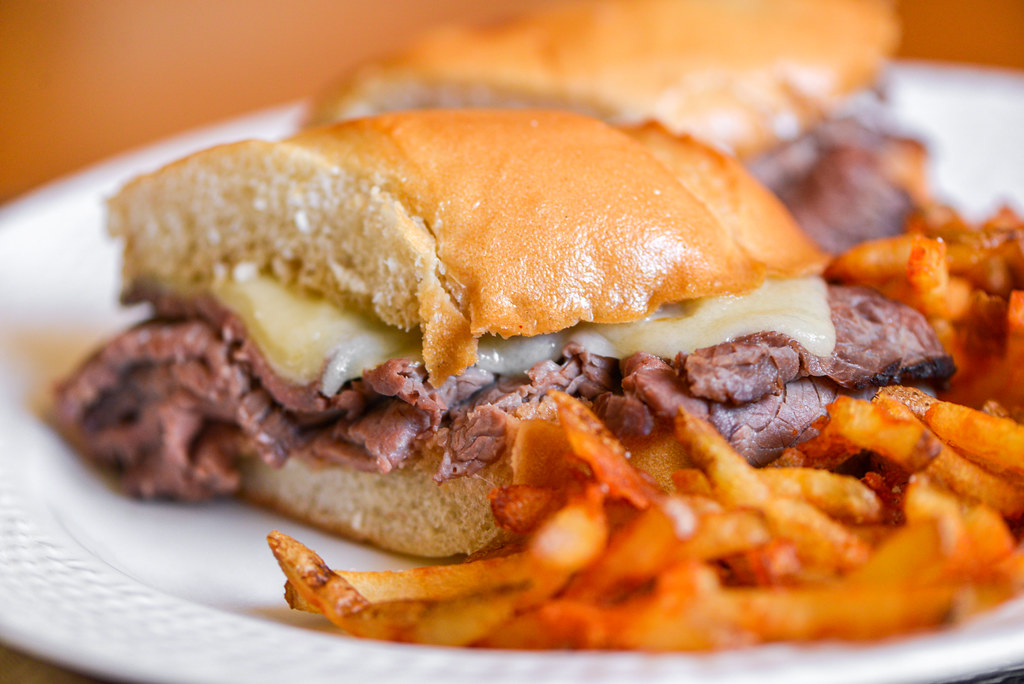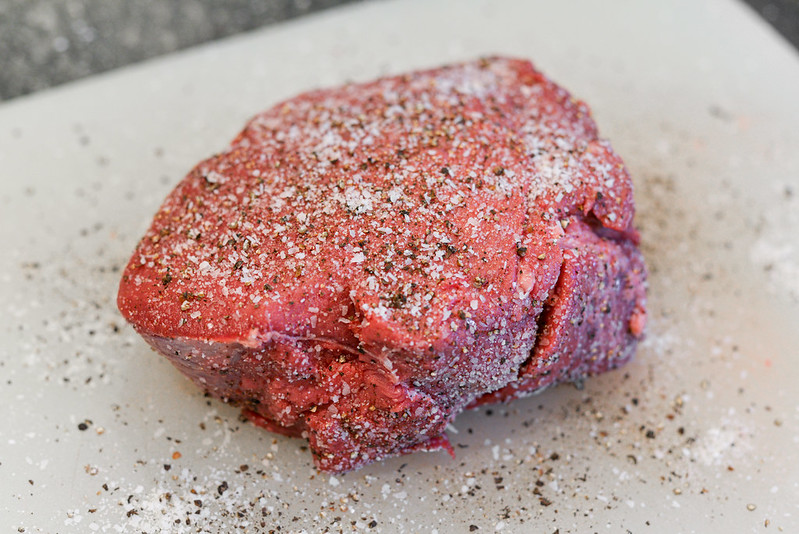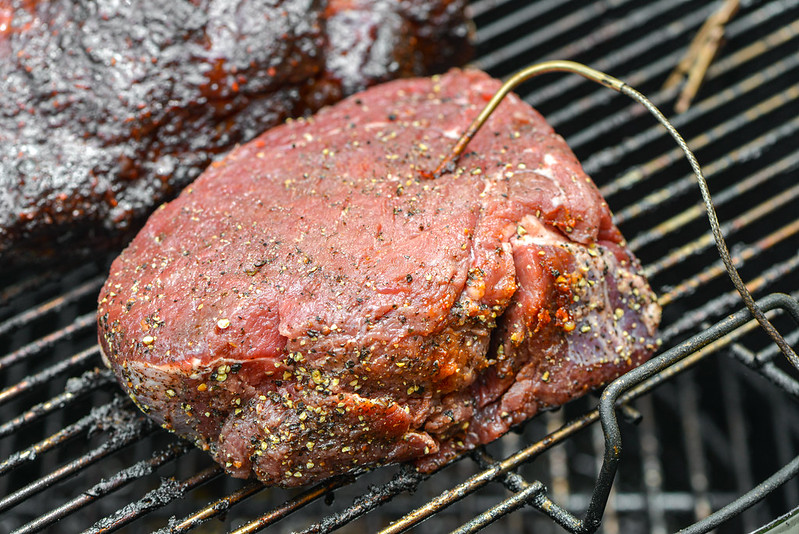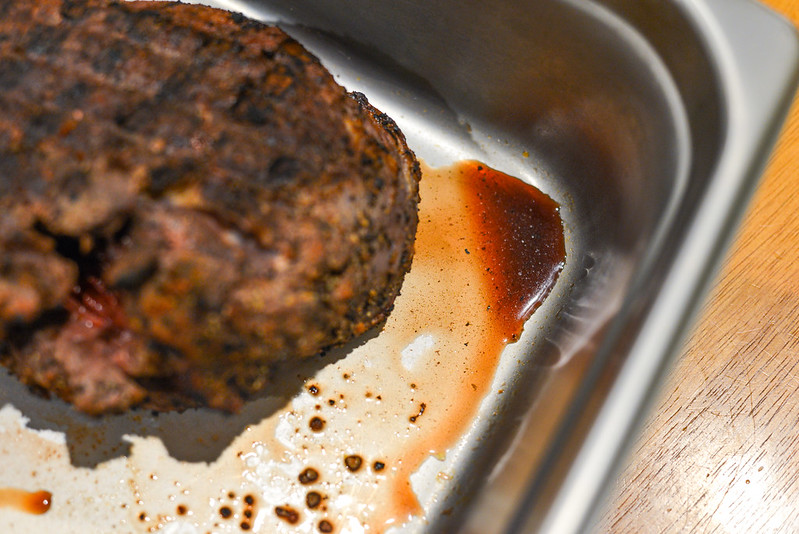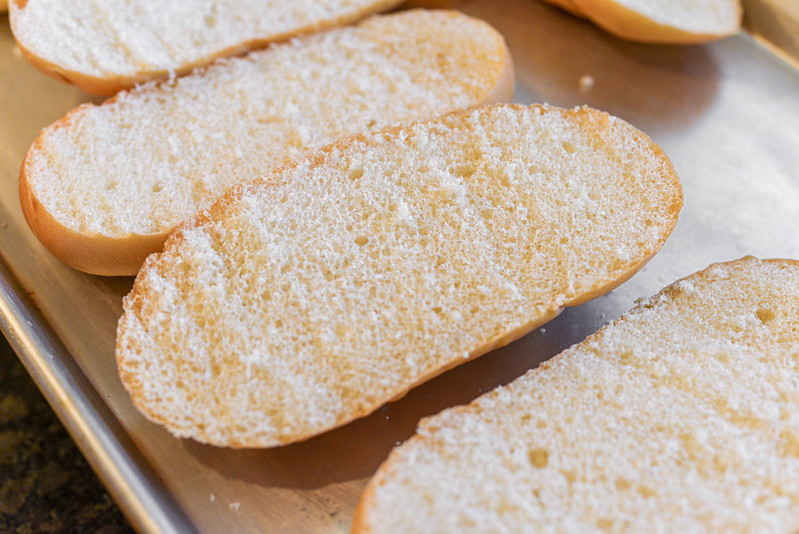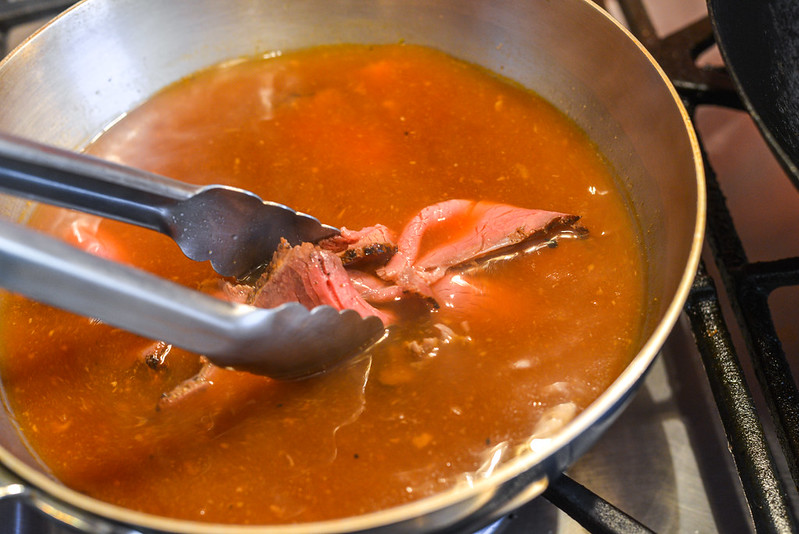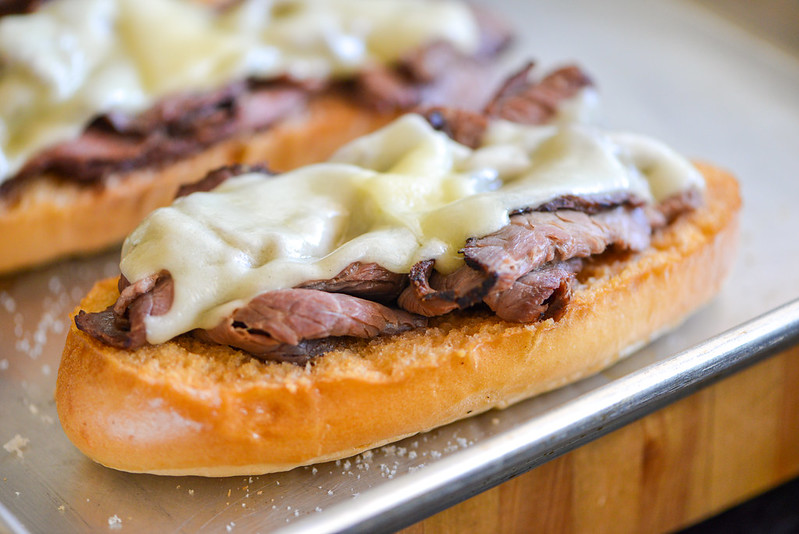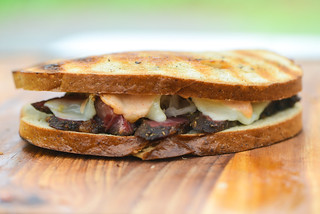Smoked French Dips
Roast beef is my jam, but I don't order it as often as my love for it would imply because I find it to be a risky proposition—I could end up getting gloriously juicy and flavorful rosy red beef or dry and gray lackluster meat. Winding up with later is obviously what gives me pause, but when I really want some roast beef, I'm in doubt of the quality, and the option presents itself, I will opt for a French dip. With addition of jus and not needing the beef to be rare, French dips are a safer bet and are also incredibly delicious. After a string of positive experiences making homemade roast beef, it felt like the French dip was the next logical step on that journey, but I took some learnings from those past recipes and added smoke into the equation to up the ante even more.
I've done a lot of experimentation with cuts for roast beef, and while I still have some more to do, so far, I'm feeling the top round the most for its good balance between flavor, tenderness, and value. I've also been trying out different seasonings for roast beef and have found that I'm drawn to rubs with a lot of depth to them, but for French dips, I thought the minimal salt and pepper treatment would be best in order to feature the beef and its smokiness the most.
After seasoning the roughly three pound piece of top round I had, I wrapped it in foil and let it sit in the fridge overnight. If you have at least an hour on hand, this is a recommend step because during this time the salt acts as a brine, extruding moisture from the beef, which then gets reabsorbed it in a way that the flavor and moisture retention are both enhanced. The next day, I tossed the beef on the smoker, which I had running at 225°F already for a couple other things I was cooking, so it was kind of a no brainer for me to make use of that fire for this roast beef as well.
I like my roast beef on the rare side, so I shoot for an internal temperature between 120 and 125°F. Even at the low cooking temp of 225°F, this doesn't take that long—usually about an hour an half. To ensure enough smokiness gets into the meat during this short time, I like to use a medium smoking wood, such as oak or hickory, which can be heavy handed on lighter meats with similar cooking times, but works great on the more robust beef.
One more thing about this short stint in the smoker is the exterior doesn't really have enough time to brown. So what emerges at the end of the cook is a gray and lackluster looking piece of beef on the outside. On the inside though, it should be cooked perfectly, so the challenge now is getting a sear without further cooking the inside too much.
I take a two step approach to do this: first I let the beef rest for a bit so the internal temperature drops about five to ten degrees. The second step is to sear the top round over a very hot fire. I like using my charcoal chimney with a grate set atop for this, which offers me blazing heat with just enough surface area to accommodate the cut. With this set-up, I've been able to sear the exterior in a minute or so per side, which isn't really enough time for the inside to cook much more.
The one drawback to this cooking process was the relatively little amount of jus that I was able to obtain at the end. If roasted in an oven, any juice dripping from the beef could be saved as it ends up staying in the pan, but I had just a little bit of juice that accumulated during the resting times before and after searing.
I did save this and make use of it, but mainly the jus that was used for these French dips was beef stock—which is pretty standard practice anyway. I did utilize my gelatin-rich and super flavorful homemade beef stock that I made at the start of the winter, froze, and reserved for the right occasions—this certainly seemed like a place where you want the best stock to make the most flavorful sandwiches.
While I was defrosting the stock, I went ahead and sliced up the beef. I'm a fan of thinly shaved deli meats, but most French dips I've had are cut a bit thicker, so I followed suit here. The beef was the beautiful rosy red color that draws me in, and tasting some while slicing confirmed I had another delicious specimen on my hands. I even paused for a second and wondered if I wanted to really cook this beef more in the stock or just save it as-is, but I was already in it, so kept going.
A good spicy mustard is a great and classic compliment to the rich beef in French dips, and to get the spiciest of the spicy mustards, I made my own. All you really need for this is some spicy mustard powder, like Coleman's, and cold water. You get maximum heat from just those two ingredients, but it's also not long lived, so a splash of vinegar is added and that's what stabilizes the chemical reaction taking place and keeps that heat strong for awhile. I also tossed in some garlic paste for good measure as well.
If you're a regular reader of this site, you're familiar with my lamenting over the lack of good crusty hero rolls where I live and, like in past recipes, the bread was the weakest link in my French dips. For me, the right bread here is a soft French roll with a good crisp-tender exterior. The bread I had was kind of soft all over, but it actually wasn't as big of an issue in the French dips as in other recipes because first I toasted the bread to warm it and dry it out a bit.
Then I dunked the rolls in the stock-jus mixture. This changed the texture of the bread into something more acceptable with a combo of some crunch and pleasing squishiness. You can dunk your bread to your desired saturation point, but I don't like the bread to be falling apart when trying to eat the sandwich, so I prefer a quick dip and then introduce additional jus via dunking during consumption.
Along with the rolls, the beef also has to be well heated, which I did by also giving it a bath in the broth. The broth picked up a more brown color and additional flavor as each batch of beef was set in it just long enough for it to just start to lose its red color.
Once heated, I arranged the beef on the soaked rolls and then topped with slices of Swiss cheese, which isn't a requirement, but something I like on my French dips. If the beef is hot enough and the cheese isn't too cold, there should be sufficient heat to melt it. If not, and you want that melty cheese goodness, you can always place the sandwiches under a broiler for a minute to do the trick.
It was a little sad to see that once perfectly rare roast beef now more throughly cooked, but that feeling quickly faded with the first bite—the meat was incredibly beefy, lightly smoky, and was embedded with a lot of juice thanks to that broth bath. I almost didn't need to dip it any more, but a little extra jus in the bread was a welcomed addition. For me, the spicy mustard was key, but the stuff was so sharp and pungent that only a bare minimum was needed to add contrast to rich beef and cheese without overwhelming the sandwich altogether. A number of my roast beef explorations happened during the pandemic, so I haven't been longing for this delectable deli meat, but I had not had a French dip in so long because this sandwich has always been eating out fodder for me and I was doing no dining out. So not only were these French dips a good change of pace to cold roast beef, they also hit a comforting feeling that I didn't even realize I was missing until I took those initial bites.
